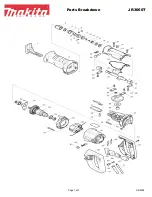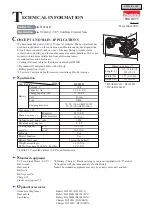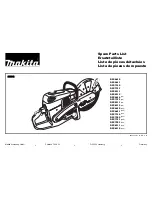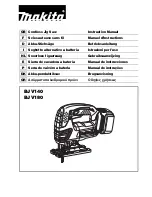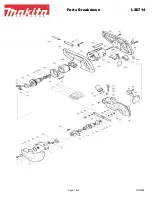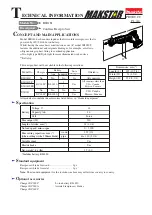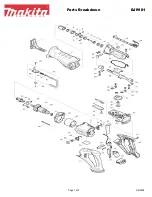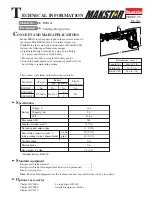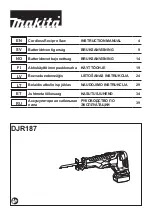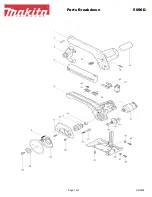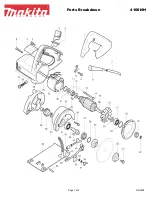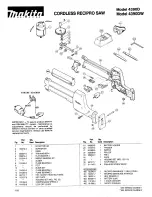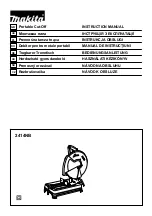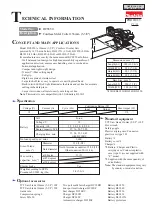
25 І 48
Additional safety instructions
Safety precautions
–
Warning! Do not use damaged, cracked or de-
formed saw blades.
–
Replace a worn table insert.
–
Only use saw blades recommended by the
manufacturer which conform to EN 847-1.
m Warning! Keep attention When changing the
saw blade.The cutting width is not smaller and
the main blade thickness of the saw blade is not
greater than the thickness of the gap wedge!
–
Make sure that a suitable saw blade for the mate-
rial to be cut is selected.
–
Wear suitable personal protective equipment.
This includes:
Hearing protection to avoid the risk of becoming
hearing impaired,
Respiratory protection to avoid the risk of inhaling
harmful dust,
–
Wear gloves when handling saw blades and rough
materials.
–
Carry saw blades in a container whenever practi-
cal.
–
Wear goggles. Sparks generated during work or
splinters, chippings and dust coming from the
device can lead to loss of eyesight.
–
Connect a dust collecting device to the electric
tool when sawing wood. The emission of dust is
influenced, among other things, by the type of
material to be processed, the significance of local
separation (collection or source) and the correct
setting of the hood/guide plates/guides.
–
Do not use saw blades made of high-speed alloy
steel (HSS steel).
–
In times of non-use keep the push stick or the
push block with the electrical power tool in its
holder at all times.
Maintenance and repair
–
Pull out the mains plug for any adjustment or re-
pair tasks.
–
The generation of noise is influenced by vari
-
ous factors, including the characteristics of saw
blades, condition of saw blade and electric tool.
Use saw blades which were designed for reduced
noise development, insofar as possible. Maintain
the electric tool and tool attachments regularly
and if necessary, initiate repairs in order to re-
duce noise.
–
Report faults on the electric tool, protective de-
vices or the tool attachment to the person respon-
sible for safety as soon as they are discovered.
Safe work
–
Use the push stick or handle with sliding wood,
to pass the workpiece securely out off the saw
blade.
–
Make sure that the riving knife is always used,
and set up is correctly.
–
During non-use of the electric tool or prior to
maintenance and when replacing tools such as
saw blades, bits, milling heads.
–
When the saw blade is blocked due to abnormal
feed force during cutting, turn the machine off
and disconnect it from power supply. Remove the
work piece and ensure that the saw blade runs
free. Turn the machine on and start new cutting
operation with reduced feed force.
15 Do not leave a tool key inserted
–
Before switching on, make sure that keys and
adjusting tools are removed.
16 Avoid inadvertent starting
–
Make sure that the switch is switched off when
plugging the plug into an outlet.
17 Use extension cables for outdoors
–
Only use approved and appropriately identified
extension cables for use outdoors.
–
Only use cable reels in the unrolled state.
18
Remain attentive
–
Pay attention to what you are doing. Remain sen-
sible when working. Do not use the electric tool
when you are distracted.
19 Check the electric tool for potential damage
–
Protective devices and other parts must be care-
fully inspected to ensure that they are fault-free
and function as intended prior to continued use
of the electric tool.
–
Check whether the moving parts function fault-
lessly and do not jam or whether parts are dam-
aged. All parts must be correctly mounted and all
conditions must be fulfilled to ensure fault-free
operation of the electric tool.
–
The moving protective hood may not be fixed in
the open position.
–
Damaged protective devices and parts must be
properly repaired or replaced by a recognised
workshop, insofar as nothing different is specified
in the operating manual.
–
Damaged switches must be replaced at a cus-
tomer service workshop.
–
Do not use any faulty or damaged connection
cables.
–
Do not use any electric tool on which the switch
cannot be switched on and off.
20 Attention!
–
Exercise elevated caution for double mitre cuts.
21 Attention!
–
The use of other insertion tools and other acces-
sories can entail a risk of injury.
22
Have your electric tool repaired by a qualified
electrician
–
This electric tool conforms to the applicable safety
regulations. Repairs may only be performed by an
electrician using original spare parts. Otherwise
accidents can occur.
23 Do not use the cable for purposes for which it is
not intended
–
Do not use the cable to pull the plug out of the
outlet. Protect the cable from heat, oil and sharp
edges.
Содержание 39013029933
Страница 2: ...2 48...
Страница 3: ...3 48 Fig A 12 1 2 3 4 5 6 7 8 9 10 11 Fig 1 a 1 Fig 1 1 1 2...
Страница 4: ...4 48 Fig 2 6 Fig 3 3 Fig 4 4 Fig 5 5 b Fig 6 10 9 Fig 6 1 9 10...
Страница 5: ...5 48 Fig 7 11 8 Fig 7 1 Fig 7 2 11 Fig 7 3 11 Fig 8 14 13 Fig 9 16 5 4 Fig 10...
Страница 6: ...6 48 Fig 11 Fig 12 Fig 12 1 ca 3 8 mm Fig 13 19 Fig 14 18 20 Fig 15 20 21 Fig 16 Fig 16 1...
Страница 8: ...8 48 Fig 21 Fig 22 32 31 Fig 24 2mm 3 8mm 3 8 m m Fig 23 Fig 26 Fig 25 Fig 27...
Страница 45: ...45 48...
Страница 47: ...47 48...































